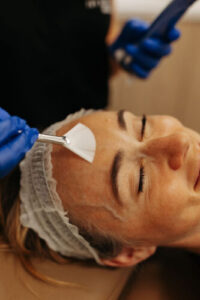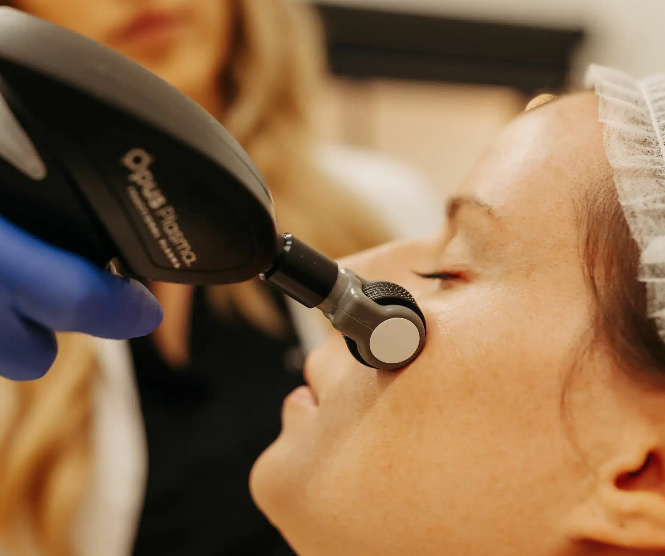
Laser treatments have become increasingly popular for those seeking effective skin rejuvenation without invasive procedures. Among the many options available, Opus Plasma and IPL (Intense Pulsed Light) stand out as two of the most talked-about technologies today. But how do they differ, and which one is better suited for your skin goals? In this post, we’ll break down what makes each treatment unique to help you make an informed decision.

Opus Plasma is a next-generation skin resurfacing treatment that uses fractional plasma technology combined with radiofrequency (RF) energy. This combination allows it to target a variety of skin concerns such as fine lines and wrinkles, skin laxity, texture irregularities, acne scars, and even stretch marks. By creating controlled micro-injuries in the skin, Opus stimulates collagen production and enhances skin renewal, making it ideal for those looking to improve overall texture and firmness.
On the other hand, IPL, or Intense Pulsed Light therapy, is a non-laser light treatment that uses broad-spectrum light to target pigment and vascular issues. It’s commonly used to treat sun damage, brown spots, hyperpigmentation, rosacea, redness, and uneven skin tone. Unlike Opus, which focuses more on resurfacing and structural improvement, IPL is primarily concerned with correcting discoloration and improving the skin’s overall clarity.
The technology behind each treatment also sets them apart. Opus utilizes fractional plasma energy paired with RF to resurface the skin deeply, while IPL uses pulses of light that penetrate the skin to break up pigment and vascular irregularities. In terms of treatment sensation, Opus is typically described as feeling warm with a snapping or prickly sensation, whereas IPL often feels like a rubber band snap or mild stinging warmth. Downtime varies as well: Opus usually involves 1–3 days of redness or flaking, while IPL tends to have little to no downtime, though some temporary redness or darkening of treated spots can occur.
When it comes to results, Opus delivers smoother, firmer skin with improved texture and reduced scarring, thanks to its collagen-stimulating effects. IPL, by contrast, results in a clearer, more even-toned complexion with reduced pigmentation and redness. Most patients need 2–3 sessions of Opus for visible results (with more for deeper concerns), while IPL typically requires 3–5 sessions spaced a few weeks apart.
Skin type also plays a role in determining which treatment is appropriate. Opus is generally safe for most skin tones, including darker complexions when performed with the right settings. IPL, however, is best suited for fair to medium skin tones, as the light energy can pose a higher risk of pigmentation changes in deeper skin tones.
So, which treatment should you choose? Opus is ideal if you’re looking to improve texture, tighten the skin, or reduce scarring and can tolerate a bit of downtime. IPL may be the better option if your main concerns are pigmentation or redness and you prefer minimal recovery time. In some cases, these treatments can even be combined for enhanced results, depending on your skin’s needs and your provider’s recommendations.
It’s also important to consider who should avoid each treatment. Those with active acne, open wounds, or certain skin conditions may need to avoid Opus until their skin has healed. IPL isn’t recommended for individuals with deeper skin tones or those prone to post-inflammatory hyperpigmentation.
In conclusion, both Opus and IPL are highly effective treatments, but they serve different purposes. Choosing the right one depends on your specific skin concerns, goals, and tolerance for downtime. The best way to determine what’s right for you is to schedule a consultation with a licensed provider who can evaluate your skin and create a personalized treatment plan. Ready to take the next step? Book your consultation today and start your journey toward healthier, more radiant skin.